- Home
- Pat Conroy
The Pat Conroy Cookbook Page 19
The Pat Conroy Cookbook Read online
Page 19
2. Add the jalapeño and shallots and process until the mixture is as smooth as possible, about 2 minutes. Pour the mixture into a bowl and stir in the yogurt. Add the salt (you may need more than ½ teaspoon).
3. Pour into a storage container and chill in the refrigerator for up to 2 hours. Chill six serving bowls.
Ladle the cold soup into chilled bowls and sprinkle with dill. Garnish each serving with a small dollop of sour cream.
SWORDFISH SALAD Swordfish salad is an elegant, forgiving recipe that can be made ahead of time. It is easy, and there are only three indispensable rules for success: don’t overcook the pasta, don’t overcook the swordfish, and don’t burn the pine nuts. I chose it for the bridesmaids’ lunch because I was frankly overwhelmed by all the details of Megan’s wedding.
I hired my old friend Butch Polk to put on an old-fashioned outdoor barbecue the night before the bridesmaids’ luncheon. Since the groom, Terry Giguire, and his family came from California, I thought they deserved a taste of the Old South. In the middle of the barbecue, a ten-foot alligator, who lives in the lagoon behind our place, made his evening run past our house. To this day the Californians think I hired that alligator for the pure shock value it gave to my new West Coast relatives.
• SERVES 6
1 pound spaghetti
1½ pounds swordfish steaks (¼ to 1 inch thick)
½ cup fresh lemon juice (about 2 lemons)
¼ cup olive oil
1 cup pitted and sliced green olives
½ cup toasted pine nuts
Herb mayonnaise*
Coarse or kosher salt and freshly ground black pepper
Fresh marjoram and tarragon sprigs
1. Preheat the broiler.
2. Cook the pasta according to package directions until al dente. Drain in a colander, but do not rinse.
3. Brush the swordfish steaks lightly with lemon juice (use only half the amount) and broil about 6 inches from heat source until lightly browned, turning once, a total of 6 to 8 minutes. (The second side always takes less time than the first.)
4. Cool the fish to room temperature and cut into bite-size pieces.
5. Transfer the drained spaghetti to a large mixing bowl and toss with the remaining lemon juice (at least ¼cup) and the olive oil. Gently fold in the fish, olives, and pine nuts.
6. Add the mayonnaise sparingly and toss until salad is covered but not drenched with dressing.
7. Refrigerate until the flavors marry, about 2 hours.
8. Season the salad with salt and pepper to taste, transfer to a serving platter, and garnish with herb sprigs.
SQUASH CASSEROLE I have been looking for an opening to praise fresh mozzarella, as opposed to that tasteless, hardened glop we Americans have used to ruin perfectly good pizzas. With this single squash casserole, which is a breeze to make, I seize my opportunity.
The Ruggieri brothers’ shop on the Campo de’ Fiori was my favorite place to buy food in Rome. It was the youngest of the brothers who introduced me to mozzarella di bufala, made from the delicious milk of water buffalo that graze the pastures of Campania. The cheese was silken and bone white and freshly made. I had never seen cheese that came packed in water, but this cheese is perishable and needs to be eaten soon after it is made. It is a sweet, delicate cheese with a slight tartness in the after taste. I have found it in gourmet cheese shops in New York and California, and American cheesemakers are making gallant attempts to make a fresh mozzarella of their own. If you are ever in Italy, order a Caprese salad: slices of mozzarella di bufala, fresh ruby-red tomatoes, julienned basil leaves—all anointed with extra virgin olive oil. You will not eat a better meal in your life. • SERVES 6
1 large red onion, chopped
1 garlic clove, minced
¼ cup diced country ham
1½ pounds zucchini
½ pound fresh mozzarella (or mozzarella di bufala), cubed
½ teaspoon red pepper flakes
1 to 2 teaspoons chopped fresh rosemary or thyme
½ cup homemade fresh or dry bread crumbs
1. Preheat the oven to 350°F.
2. In a nonstick medium sauté pan over medium heat, sauté the onion and garlic until wilted and lightly browned. Stir in the ham and cook briefly, about 2 minutes.
3. While onion is sautéing, clean and trim the zucchini and cut into ¼-inch pieces. Transfer zucchini to a mixing bowl. Add the mozzarella, red pepper flakes, and rosemary. Stir in the warm onion and ham mixture.
4. Transfer the vegetable mixture to a casserole and sprinkle the bread crumbs on top.
5. Bake until the bread crumbs are browned and the casserole is bubbling slightly around the edges, 45 to 50 minutes. Serve hot.
SANDRA’S MAMA’S POUND CAKE I have lived a life of many regrets, things I’ve said that I shouldn’t have said, things I have written that caused grief to people I loved, women I should have married, women I shouldn’t have married, friends I should have pursued, and friends whose aura was so dangerous I should have sprinted away from them after our first handshake. But I ache when I realize that my current wife’s mother, Pat King, died a full five years before I fell in love with her daughter. I hear the stories whenever the rowdy King tribe gathers at the peanut farm in Pinckard, Alabama, where Sandra’s father, Elton (Tony), still lives and prospers and fishes every day of his life for bass and catfish.
Pat King was a legendary Southern cook and, to hear her three daughters tell it, a package of kinetic movement who could do everything well except sit still. Her grandsons talk about her Christmas and Easter feasts as if James Beard and Alice Waters had flown into Pinckard to cook them. While at the farm, sadly exiled among Alabama football fanatics, all of whom look and act like extras in the film version of James Dickey’s Deliverance, I enjoy the endless discussions of Pat King’s wizardry in the kitchen. Sandra herself is a marvelous cook, but even she agrees that she could not hold a frying pan to her mother’s natural gifts. I’ve met no one in Alabama who says they ever met a finer cook than the sweet-faced Pat King.
So, in honor of my daughter Megan, and in honor of my beloved wife, I made Pat King’s famous pound cake to cap off the bridesmaids’ luncheon with a bang. There is one secret that I carry around with me about Pat King: she might have been a superb cook, but she was much better at raising daughters.
¾ pound (3 sticks) butter, softened
3 cups sugar
8 large eggs, at room temperature
1 teaspoon vanilla extract
3 cups cake flour, sifted twice
Sliced fresh peaches
Whipped cream
1. In preparation, turn a large tube pan upside down; place a piece of wax paper over the bottom and trace the outline. Cut the paper to fit, including a hole for the center tube, then invert the pan and put the wax paper in the bottom. Lightly grease the paper as well as the sides and the center tube of the pan with pure vegetable oil, then dust with flour, shaking out the excess. This method will ensure that the cake can be removed without falling apart. Preheat the oven to 325°F.
2. With an electric mixer on medium speed, beat the butter and sugar until light and fluffy. Add the eggs one at a time, beating well after each, then stir in the vanilla. With a spatula, stir in the flour until thoroughly mixed into the batter, but do not beat, which will cause the cake to be tough. Spoon the batter into the prepared pan, smoothing the top lightly with a spatula so cake will bake evenly.
3. Bake for 1 hour, then check appearance, since ovens vary. Normally it takes 1¼ hours. (My mama checked for doneness with one of the clean, slender broom straws she kept for this task; lacking this, a toothpick or bamboo skewer will do.) Let cake rest in the pan on a rack for 10 minutes. To remove the cake from the pan, place a rack over the top, invert, and carefully lift the pan off the cake. Do not shake or force the cake out. If it does not immediately loosen, turn it back over and let it cool for another 5 minutes before trying again. Let cool thoroughly on a rack before slicing, if you can stand
to wait. This makes a large and showy, picture-perfect cake.
4. Serve thin slices (it’s very rich) with sliced peaches and whipped cream.
*To prepare an herb mayonnaise, flavor 1 cup Homemade Mayonnaise (page 57) with 2 tablespoons chopped capers and 1 tablespoon each finely chopped fresh parsley and tarragon. If fresh tarragon is not available, do not substitute dried tarragon. Use whatever fresh herb you can find, such as basil in the summer or thyme in the winter.
Southern grief at a funeral of a loved one often gets mollified by the scrumptious feast that follows the ceremony. In the South, you often eat as well after the burial of a family member or friend as you do on Thanksgiving Day or Christmas. It is the custom of the place for friends to bring a dish of delicious food to the home of the deceased—it is one of the binding social covenants that still survive in even the most estranged and disconnected enclaves of the South.
Cooking food for a grieving family and their friends is still one of the classiest ways to send a love note that I can think of. I still get teary-eyed and grateful when I think of the sheer amount and quality of the food that the people of Beaufort and Fripp Island, South Carolina, sent to my house after the deaths of my mother and father. Such generous responses tie you to some places of the earth forever. My family was overwhelmed by the kindness of the neighbors who had loved our parents. They cared for us, fed us wonderfully well, comforted us, and eased the grief of our parents’ passing with astonishing grace.
When I lived in Atlanta during the seventies and eighties I developed a signature dish I would deliver to the houses of friends or loved ones on the night before a funeral. I would fix a half-gallon jar of pickled shrimp from a recipe I had brought from the Low Country for special occasions. I missed the Low Country the whole time I lived in Atlanta, and the taste of pickled shrimp was a sure way for me to engage in time travel without leaving the city limits.
When Olive Ann Burns’s husband, Andy Sparks, died after a long illness, I brought over the jar full of pickled shrimp, and the author of Cold Sassy Tree made me give her the recipe before I left her house that night. I happened to know that Olive Ann had adored her husband and was brokenhearted at his death, but talking about food at a funeral is one of the ways we start to heal ourselves. When the novelist Paul Darcy Boles died a few years earlier, I made the pickled shrimp at the same time I worked on his eulogy. Pickled shrimp is my answer to death in Georgia. In South Carolina, I generally respond with a shy and unexpected gift of Dunbar Macaroni, the only dish in my repertoire whose origins spring from the singular and comely borders of Newberry South Carolina. I have never tasted or seen a recipe for Dunbar Macaroni outside of Newberry. It is indigenous to the town and part of its history.
In 1962, I was playing the first baseball game of the season with Beaufort High School. The boy who sat next to me in Gene Norris’s English class was Randy Randel, the son of the school superintendent. Randy was a superb athlete and a delight in the classroom: mouthy, irreverent, and extroverted.
Mr. Norris would get exasperated with Randy and say, “Sit down in your seat, Randy, you fool. And hush your mouth, boy.”
“Norris,” Randy would say sadly, “don’t forget who my father is, Norris. Your job’s hanging by a thread, Gene. One word from me and you’re in the unemployment line.”
“Don’t you dare call me Gene, you little scalawag,” Mr. Norris would say. “How dare you threaten me with my job.”
“No threat, Gene,” Randy would say, grinning at the class. “I’m talking fact here, son.”
Randy had asked me to go golfing with him on Easter weekend when his parents were returning to his grandmother’s house in Newberry. Since I was a military brat, I had never gone to anyone’s house for a whole weekend in my life. My high school years had been excruciatingly lonely ones. My mother was thrilled that Randy had extended this invitation and gave me permission to go immediately.
Randy was six feet four inches tall and fifteen years old, and he was the best pitcher we had on the team that year. But our coach started Jimmy Melvin, a lanky junior who was hit hard by the visiting Wade Hampton team in the first inning. (Jimmy Melvin’s name is now enshrined on the wall of black marble honoring the Vietnam veterans killed in action during that long, dispiriting war.) The coach replaced Jimmy with Bruce Harper, who had a fastball I was afraid of, but Bruce was wild that afternoon. Soon the coach had Randy warming up in what passed for a bullpen at Beaufort High School. (Bruce Harper would walk out of the history of that game and into the history of his time—he would serve with distinction as one of John Ehrlichman’s lawyers during the Watergate trials.)
Then it was Randy Randel’s time, and he was called on to shut down the Wade Hampton Generals. Already there was talk about Randy pitching in the major leagues one day. He set out to prove that there was substance to this talk. He struck out five of the first seven batters he faced, and the other two batters did not even get the ball out of the infield. Randy Randel had not allowed a hit when he fell to the ground after striking out his fifth batter. When the ambulance finally arrived and a girl named Pat Everette gave Randy mouth-to-mouth resuscitation until Dr. Herbert Keyserling moved her aside and injected a shot of pure adrenaline into his heart, every witness to Randy Randel’s fall to the earth had been changed and changed for all time. The doctor said that Randy had been dead when he hit the ground.
In Eugene Norris’s English class the next day, Randy’s empty seat exuded a devastating sense of displacement and loss. His seat’s emptiness filled the room. The whole world seemed misplaced and ill-fitting. My class and I were in a state of shock when Gene Norris walked into the room, cleaning his glasses with his tie.
“I was just thinking about grief and how we express it. Or how we don’t. Boys seem to have the toughest time showing how much they hurt, but the boys in here shouldn’t. Not in this room. Not among those who loved Randy with you.”
The room came apart, and I cracked like an egg. I wept for two days and could do nothing to stop myself. I wrote my first poem about Randy’s death and gave it to his mother and father after the funeral. Nor did I have to call off my trip to Newberry because Randy was buried in Newberry with his mother’s people in the Rosemont Cemetery. I rode to Newberry with Gene Norris and stayed in his Uncle John and Aunt Elizabeth’s house, where I fell in love with Gene’s pretty cousin Liz, or “Cuz” as he called her.
I did not know then that love and death could find each other at the same dance. Liz was a fetching and uncommonly lovely freshman at Columbia College, and I was smitten the moment she walked into the room. She walked with a dreamy, sophisticated air that made the high school boys who encountered her unsteady in our loafers.
On the way to Randy’s burial service, I asked Mr. Norris, “Does Liz ever date high school boys, Mr. Norris?”
“Of course not,” Gene said, dismissing the possibility out of hand. “She wouldn’t be caught dead with a high school Harry like you. Liz only dates the cream of the crop of the college boys. From the very best fraternities. Her boyfriend’s going to be a doctor. Yes, sir, a doctor.”
“If she ever breaks up with her doctor friend, I’d sure be interested, Mr. Norris.”
“Of course, you’d be interested, boy,” he said. “But she’s got big plans with Clemson men and leaders of fraternities. She left you high school Harrys back in the playgrounds a long time ago. Now, quit mooning over my cousin and start thinking about Randy.”
When I got to Randy’s grandmother’s house, I could smell the food all the way up the hill on Main Street where we parked the car. His grandmother, Mrs. Smith, who would soon become Mamaw to me, introduced me to Dunbar Macaroni. She gave me the history, lore, and legend of the dish as she served me a large portion.
“No one knows who Mr. Dunbar was. But we are absolutely sure he was a Newberrian. This dish is native to this town. You’ll never find another single soul eating this anywhere. But it’s delicious. Though there are two or three versions of the dish, I�
�m letting you eat mine. I made it the classic way. No frills or fuss.”
I knew so little about food and the way it was prepared that all I remember about her Dunbar Macaroni was that she watched me closely as I ate her concoction of cheese and macaroni and onions. It was my first South Carolina funeral, and everything about that day remains bright, vivid, and profoundly sad. Though I had never felt sadder, I had never eaten better in my whole life. There was something scandalous to me about combining mourning Randy with the exquisite pleasures of a Newberry table.
I did not eat Dunbar Macaroni again for thirty years. I was in the middle of finishing the novel Beach Music when I got a call from Gene Norris, late at night. He could hardly speak as he told me that his cousin Liz, the one who had infatuated me as a boy, had died in her sleep at the age of forty-nine. Liz had followed her plan with immaculate precision and married that Clemson fraternity man, who then set about to become a doctor. They had lived out their lives as important citizens of Newberry, raised two children, attended the Lutheran church, and had some fine years before it began to go wrong with them. Their divorce was almost final when she was found dead in her bed. Sadness had attached itself to her final years, and Gene would periodically ask me to call Liz to cheer her up when things were really bad. I tried to get Liz to come to a screening of The Prince of Tides in New York with Gene, but her lawyer said it could be used against her in court. I sent her a bottle of champagne that Barbra Streisand had sent to my hotel room after that screening. Liz called me to tell me she and several of her girlfriends had made an elaborate ceremony out of drinking that champagne. The note I had written to Liz when I sent her the champagne was hanging by a magnet on her refrigerator door when I gathered with her family after her burial.

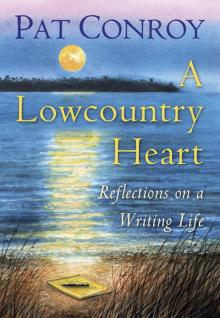 A Lowcountry Heart: Reflections on a Writing Life
A Lowcountry Heart: Reflections on a Writing Life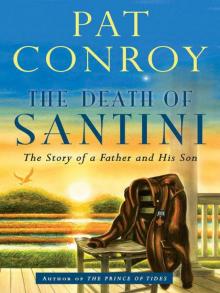 The Death of Santini: The Story of a Father and His Son
The Death of Santini: The Story of a Father and His Son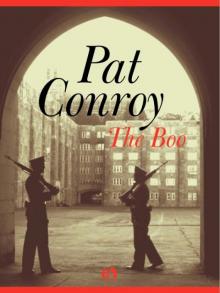 The Boo
The Boo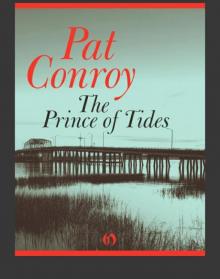 The Prince of Tides
The Prince of Tides Beach Music
Beach Music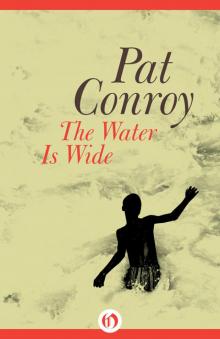 The Water Is Wide
The Water Is Wide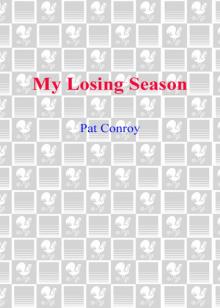 My Losing Season
My Losing Season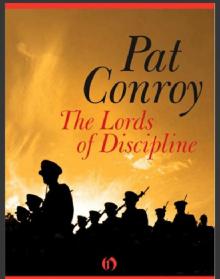 The Lords of Discipline
The Lords of Discipline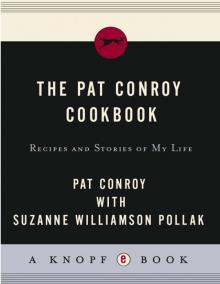 Pat Conroy Cookbook
Pat Conroy Cookbook My Reading Life
My Reading Life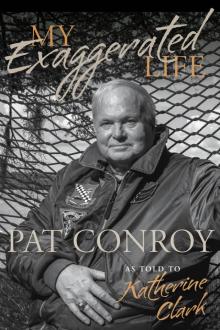 My Exaggerated Life
My Exaggerated Life The Pat Conroy Cookbook
The Pat Conroy Cookbook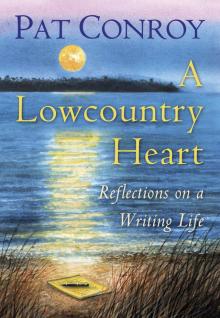 A Lowcountry Heart
A Lowcountry Heart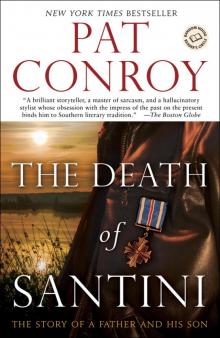 The Death of Santini
The Death of Santini